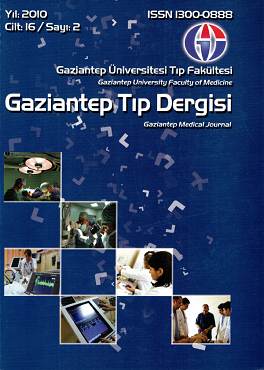Opinions Of The Higher School Of Health Students Toward Media And lts lmpact
DOI:
https://doi.org/10.58600/eurjther.2010-16-2-1253-archKeywords:
Media, Television, Nursing studentsAbstract
The aim of this questionnaire-based study was to determine the opinions of higher school of health nursing department students toward media and its impact. The study was conducted to a convenience sample of 275 higher school of health nursing department students between June 2009 and July 2009 were asked to complete a questionnaire. The forty-eight percent of the respondents (130) was watched television less than 2 hour per day. Advertising of the food such as yogurt, milk, fruit juice (98, 39.0%) was the most memorable television advertisement. The fifty percent of students (137) was watched an image is related to the violence of the child on television in the last 1 month. The great majority of the students was not watched a television program is related to portrayed tobacco and alcohol use in the last 1 week. (tobacco: 208, 76.2%; alcohol: 197, 72.2%). No correlation could be found between the impact of media and age, parents age and education level, type of social security, level of income or other sociodemographic properties. This study shows that, media becomes more efficient in every aspect of our lives, in the recent years and higher school of health nursing department students were also affected by the media.
Metrics
References
Yılmaz G. Basın yayının çocuk sağlığına etkileri. Türk Pediatri Arşivi. 2007;42:1-5.
Öztürk C, Karayağız G. Çocuk ve televizyon. Atatürk Üniversitesi Hemşirelik Yüksekokulu Dergisi. 2007;10(2):81-85.
Villani S. lmpact of media on children and adolescents: a 10-year review of the resarch. J Am Acad Child Adolesc Psychiatry. 2001;40(4):392-401.
American Academy of Pediatrics. Children, adolescents and television. Pediatrics. 2001;107:423-426.
Healy GN, Dunstan DW, Salmon J, Shaw JE, Zimmet PZ. Television time and continuous metabolic risk in physcially active adults. Med Sci Sports Exerc. 2008;40(4):639-645.
Foster JA, Gore SA, West DS. Altering Tv viewing habits: An unexplored strategy for adults obesity intervention? Am J Health Behav. 2006;30(1):3-14.
American Academy of Pediatrics. Media education. Pediatrics. 1999;104:341-343.
American Academy of Pediatrics. Media violence. Pediatrics. 2001;108:1222-1226.
American Academy of Pediatrics Children, adolescents, and advertising. Pediatrics. 2006;118:2563-2569.
American Academy of Pediatrics, Division of Public Education. "Media History Form," Media Matters Campaign kit. Elk Grove Village, lL: American Academy of Pediatrics. 1998.
Cheng TL, Brenner RA, Wright JL, Sachs HC, Moyer P, Rao MR. Children's violent television viewing: Are parents monitoring? Pediatrics. 2004;114:94-99.
Utter J, Scragg R, Schaaf D. Associations between television viewing and consumption of commonly advertised foods among New Zealand children and young adolescents. Public Health Nutr. 2006;9(5):606-612.
Aucote HM, Cooper A. Relationships between body fatness, small-screen sedentary activity and regionality among school children in Victoria. Aust J Rural Health. 2009;17:141-146.
Bar-on ME. The effects of television on child health: implications and recommendations. Arch Dis Child. 2000;83:289-292.
Şiddeti Önleme Platformu Koordinasyon ve İşbirliği Alt Çalışma Grubu Raporu. http//www.adres.gen.tr /adres/sites/2463/tc-basbakanlık-aile-arastirma-kurumu- baskanligi.html
Şiddeti Önleme Platformu Medya ve Şiddet Çalışma Grubu Raporu. http//www.adres.gen.tr/adres /sites/2463/tc-basbakanlık-aile-arastirma-kurumu- baskanligi.html
Robinson TN, Chen HL, Killen JD. Television and music video exposure and risk of adolescent alcohol use. Pediatrics. 1998;102:54-62.
Van Den Buck J, Beullens K. Television and music video exposure and adolescent alcohol use while going out. Alcohol. 2005;40(3):249-253.
Gutschoven K, Van Den Buck J. Television viewing and smoking volume in adolescent smokers: a cross- sectional study. Prev Med. 2004;39:1093-1098.
Glantz SA, Kacirk KW, McCulloch C. Back to the future: smoking in movies in 2002 compared with 1950 levels. Am J Public Health. 2004;94(2):261-263.
Pierce JP, Choi WS, Gilpin EA. Farkas AJ, Berry CC. Tobacco industry promotion of cigarettes and adolescent smoking. JAMA. 1998;279(7):511-515.
Biener L, Siegel M. Tobacco marketing and adolescent smoking: more support for a casual inference. Am J Public Health. 2000;90(3):407-411.
Goldstein AO, Sobel RA, Newman GR. Tobacco and alcohol use in G-rated children's animated films. JAMA. 1999;281(12):1131-1136.
DuRant RH, Rome ES, Rich M, Allred E, Emans J, Woods ER. Tobacco and alcohol use behaviors portrayed in music videos: A content analysis. Am J Public Health. 1997;87:1131-1135.
Downloads
Published
How to Cite
Issue
Section
License
Copyright (c) 2023 European Journal of Therapeutics

This work is licensed under a Creative Commons Attribution-NonCommercial 4.0 International License.
The content of this journal is licensed under a Creative Commons Attribution-NonCommercial 4.0 International License.


















